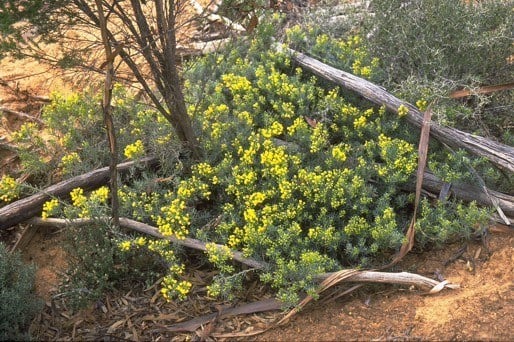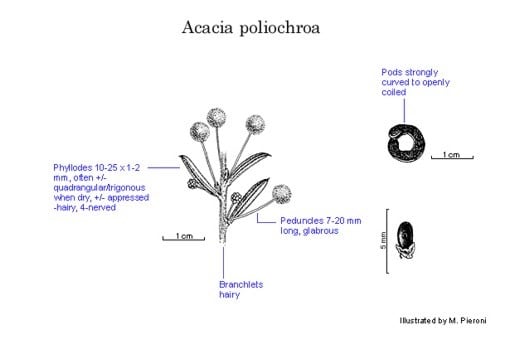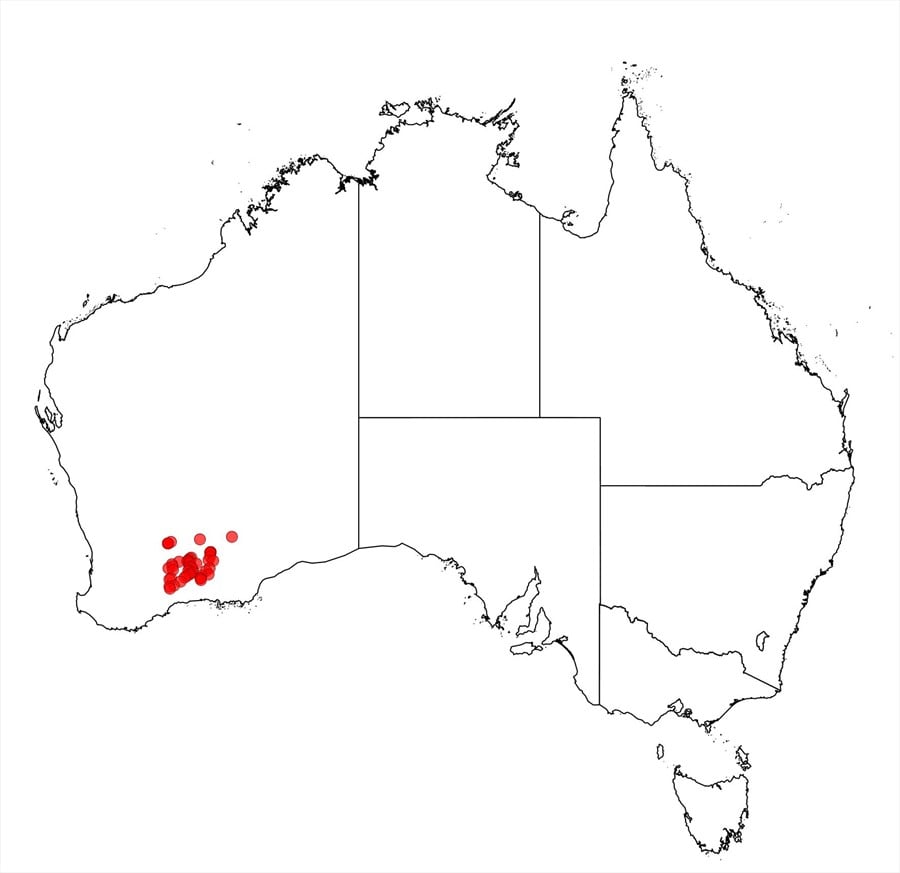Acacia poliochroa E.Pritz.
WATTLE
Acacias of Australia
Family
Fabaceae
Distribution
Occurs from Lake King E to Norseman and N to Marvel Loch, south-western W.A.
Description
Dense, domed or flat-topped dwarf shrub 0.1–0.5 m high, to 1 m wide. Branchlets puberulous. Phyllodes straight to shallowly incurved, usually terete, often drying subquadrangular/triquetrous, rarely flat, 1–2.5 cm long, usually 1–2 mm wide, often subuncinate, with mucro sometimes coarsely pungent, coriaceous, ±appressed-hairy at least when young, 4-nerved in all; midrib prominently raised on each face when flat and often excentric; gland 3–8 mm above pulvinus. Inflorescences rudimentary 2-headed racemes with axes to 0.5 mm long; peduncles 7–20 mm long, glabrous, deflexed from base in fruit; heads globular, 4–5 mm diam., usually 16–21-flowered, light golden. Flowers 5-merous; sepals free. Pods linear, biconvex, strongly curved to once-coiled, to c. 2 cm long, 2 mm wide, thinly coriaceous-crustaceous, blackish, moderately ±appressed-pubescent. Seeds longitudinal, oblong, 2 mm long, shiny, dark brown; aril terminal, subconical, white tinged yellow.
Habitat
Grows in sand, sand over clay, clay loam, loam over ironstone and gravelly ironstone, on plains and hillocks in undulating plains, in open heath, eucalypt woodland and shrub mallee.
Specimens
W.A.: 45 km N of Norseman on road to Kalgoorlie, I.B.Armitage 511 (NSW, PERTH); between Bremer Ra. and Lake Johnston, B.R.Maslin 5426 (K, MEL, MO, PERTH); 3 km ESE of Marvel Loch, K.Newbey 6025 (K, PERTH).
Notes
Allied to A. quinquenervia. Morphologically and geographically, perhaps nearest A. lachnophylla which has phyllodes with the midrib only slightly raised or immersed, 20–32-flowered heads and mottled seeds.
Scattered throughout the range are plants with flat, narrowly oblong-oblanceolate phyllodes to 3 mm wide and 21–27-flowered heads. Some of these may represent hybrids between A. merrallii and A. poliochroa. They are most readily distinguished from A. excentrica, which they resemble, by hairy phyllodes (at least when young) and glands 3–8 mm above the pulvinus.
FOA Reference
Data derived from Flora of Australia Volumes 11A (2001), 11B (2001) and 12 (1998), products of ABRS, ©Commonwealth of Australia
Author
B.R.Maslin
This identification key and fact sheets are available as a mobile application:
URL: https://apps.lucidcentral.org/wattle/
© Copyright 2018. All rights reserved.











